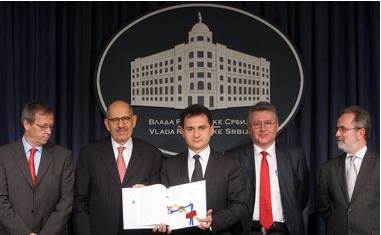
Although the International Atomic Energy Agency (IAEA or Agency) has the authority under Comprehensive Safeguards Agreements (CSA) to verify the absence of undeclared nuclear material and activities, the tools available to it to do so, under such agreements, are limited. This realization set the stage for safeguards strengthening efforts culminating in the approval by the IAEA Board of Governors of a model protocol additional to safeguards agreements which provides the Agency with such tools. This legal document is known as the Additional Protocol(AP). The AP grants the IAEA additional access to specified information and locations, equipping the Agency with important new tools to verify the correctness and completeness of States' declarations under CSAs. The IAEA can provide credible assurance of the absence of undeclared nuclear material and activities only for States with both a CSA and an AP in force. Designed for States with a CSA with the IAEA, the AP is contributing to global nuclear nonproliferation objectives by enhancing transparency and confidence building between States. When entered into force, the AP will be "additional" to the Republic of Serbia IAEA Safeguards Agreement (which is a CSA). If a contradiction occurs, the terms of the Serbian AP will take precedence.
Under a CSA, Serbia undertakes to accept IAEA safeguards on all source or special fissionable material in all peaceful nuclear activities within the territory of Serbia, under its jurisdiction, or carried out under its control anywhere. For its part, the IAEA has a corresponding right and obligation to ensure that safeguards are so applied on all such material for the exclusive purpose of verifying that such material is not diverted to nuclear weapons or other nuclear explosive devices. Under this overall objective, there are two technical objectives. The first is the timely detection of diversion of significant quantities of nuclear material to the manufacture of nuclear weapons, and deterrence of such diversion by the risk of early detection. To address fully the verification of a Serbia's compliance with its undertaking under a CSA, a second technical objective is pursued: the detection of undeclared nuclear material and activities in a State. Implementation of the AP significantly strengthens the Agency's capability to achieve this second technical objective.
The intent of the AP is to strengthen the IAEA's ability to detect clandestine nuclear activities by requiring the State to provide additional information and expanded access to IAEA inspectors to nuclear fuel cycle facilities, activities, and related locations. AP declarations provide the IAEA with a much more comprehensive picture of a State's nuclear activities than is possible under CSAs focused on nuclear material accountancy complemented by containment/surveillance measures. Comprehensive safeguards primarily involve IAEA inspectors verifying declared inventories of nuclear materials to ensure that no material has been diverted for clandestine purposes. The AP provides the IAEA with additional information and access to confirm that there are no undeclared nuclear material and activities.

As an example, an AP article that may be of high significance to Republic of Serbia is the requirement to report nuclear fuel cycle-related research and development (R&D) activities that do not involve nuclear material (and therefore are not reported under comprehensive safeguards). Once an activity (e.g., a research project to improve fuel for a research reactor) involves nuclear material, the project then is no longer declared under that article of the AP, but the nuclear material is declared under comprehensive safeguards. The AP also requires information about the manufacture, import, and export of certain nuclear-related items; further information about existing declared sites; a ten-year plan for the nuclear fuel cycle; and other information. This new information helps the IAEA understand the scope and direction of a country's nuclear program.
The AP applies to locations on Serbian territory, including any Free Trade Areas (also known as "Free Industrial Zones") even though the activity might be owned and controlled by a foreign entity. In addition, the AP applies to government-sponsored fuel cycle-related R&D activities anywhere in the world.